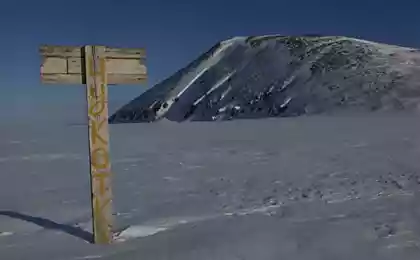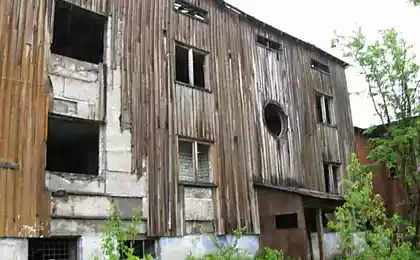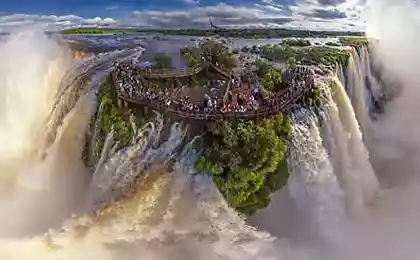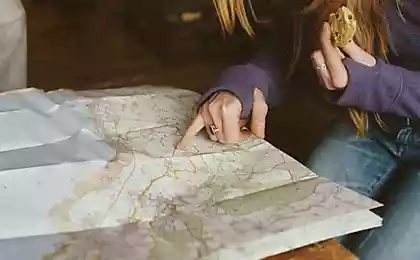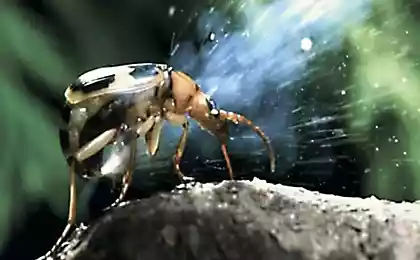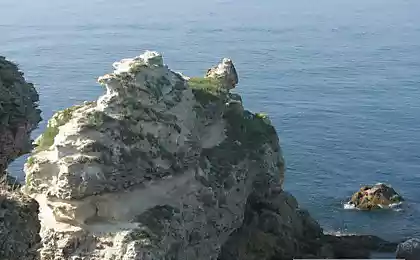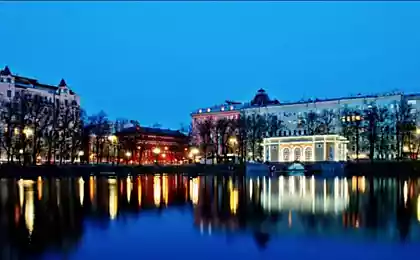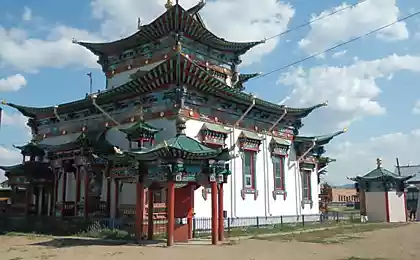769
Amazing Cape of Good Hope
Cape of Good Hope, located on the Cape Peninsula in South Africa, was once considered the most southern point of the African continent, but later scientists found that the de facto southern point is at 155 kilometers to the south - at Cape Agulhas. However, by the time the Cape of Good Hope (translated as "Cape of Good Hope") has gained wide popularity and has become a tourist attraction steep. That's about it, and the author will tell you today.
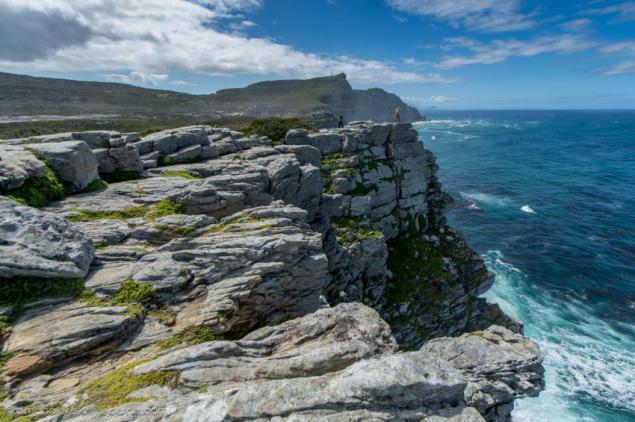
Let's start with a small historical reference: in 1488 here sailed Portuguese expedition led by Bartolomeu Dias. Her goal was to pave the sea route to India, but the mission failed. The extreme south-western point of Africa, the Cape of Storms named Bartolomeo - probably because of the strong winds and steep cliffs, which could become a death trap for the sailors.
Later sailed here Vasco da Gama, who succeeded to build a trade route to India. In memory of the successful expedition Portuguese King John II decided to rename the Cape of Storms in the Cape of Good Hope.

Our tour started in the morning. The sky was overcast, and it seemed that familiarity with the Cape of Good Hope will dull, and we are waiting for a disappointment, gray scenery around and the same gray footage that we took from this place. But the nature turned to face us: twenty minutes later the clouds began to dissipate, and when we climbed to the observation deck, the sky cleared completely.

. Such coastal cliffs I saw for the first time. Rich brown color, surface, wrinkled thousands of lines like old man's face - wrinkled. Unfortunately, the local beauty to behold there was no time: guides mercilessly chased and tourists hurry to respond to the call of all but loving couples. The latter has a special mission: to take a picture together and sign a frame in instagramme "the southernmost point of Africa" (forgive them this little cunning).
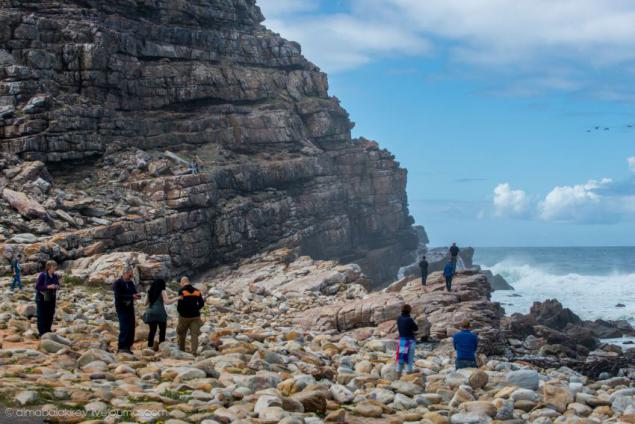
After a three-day photo-hunting whales I have a little bored by classical landscape.
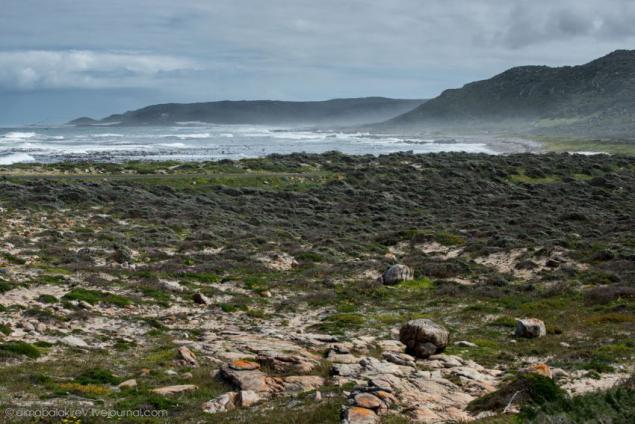
. Pointer with a sign «Cape of Good Hope» is set at the beginning of a long exhausting ascent to the top.

During a trip to Africa, I noticed that most of the tourists here - people close to retirement or pension age. Perhaps because of the high cost of the resort, and it is possible - because of generational preferences: while the youth is tracked on the beach and hanging out in clubs, those who are older, contemplate the beautiful scenery. Apparently, in the older group, and I am. :-)

Log steps seem endless. At first the path was quite gentle, but the higher we climbed, the steeper it became. Trudge upstairs with a backpack full of equipment, it was a stupid idea. Given that I needed to shoot just one lens. My advice: if you are thinking to the top, do not be afraid to leave things in the bus - nothing will happen to them.
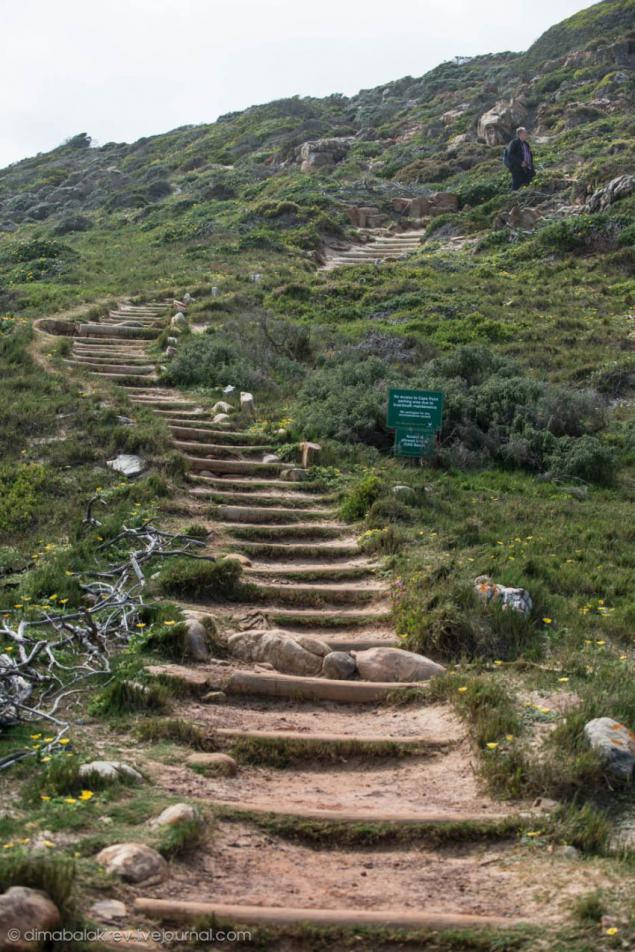
On the way across viewing platforms, which serve the plateau. Minivan parked at the coast, to look them toy.
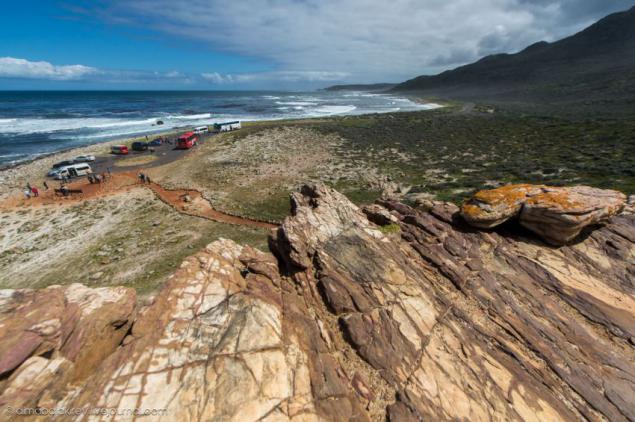
Feeling strange. Like the master of ikebana mountain turned into a giant flower exhibition. Turning his head from side to side and all around the bright, saturated and present. And in the air as much marine freshness that it literally puts pressure on you. You stand and you catch yourself thinking, "gosh, how far I was cast from home!»
"Flew bird-bird far away, with the blue sea ocean tridesyatom kingdom of Far Far Away in State» ©.
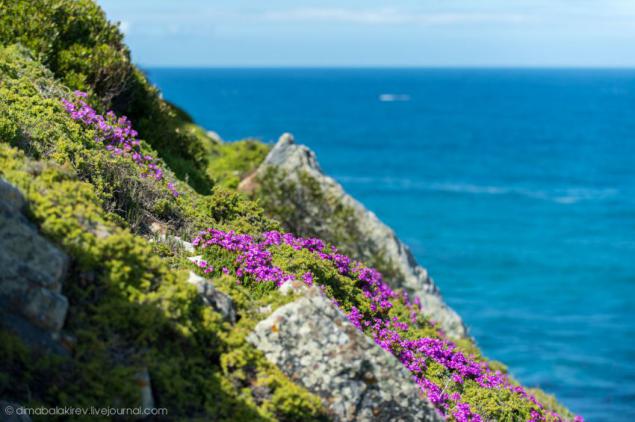
Dima and Arina the first of our group went upstairs. I was also burdened by the backpack, and at times it seemed that now I was about to head over heels and ostuplyus Pokachi down.
By the way, by the time I had not realized that my wide angle lens is broken, and the pictures are out of focus.
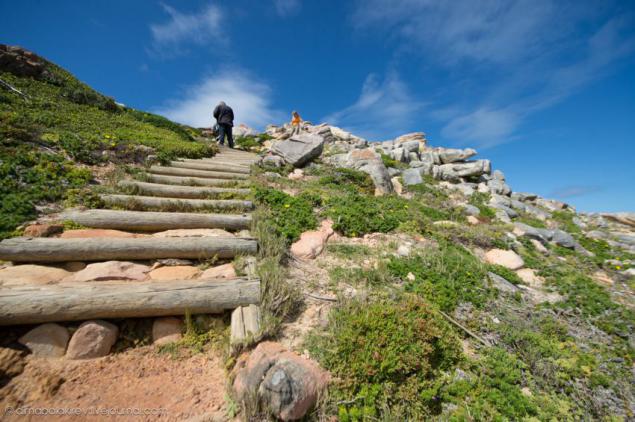
On top of a wooden staircase with steps creaked. Climbing on it, I thought about why these stones do not fall off and how many thousands of years, they still stand for.
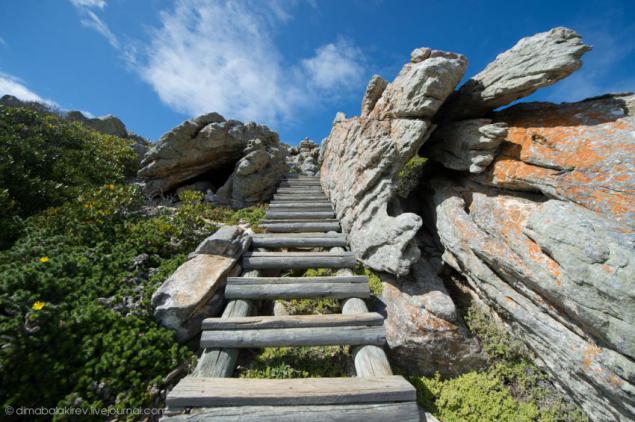
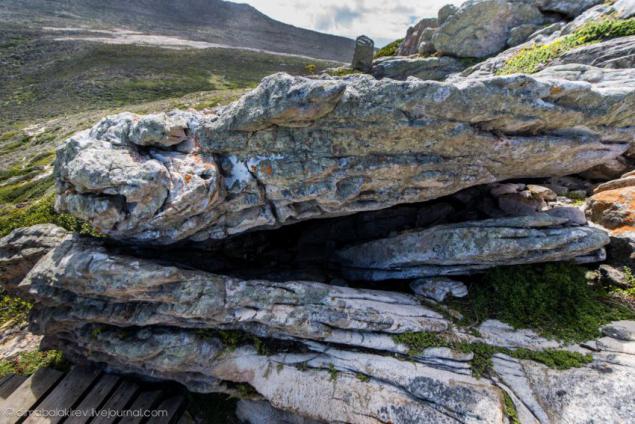
Plummet rock something like a two-headed monster with an open mouth. Such could be the ancient worship of the natives.
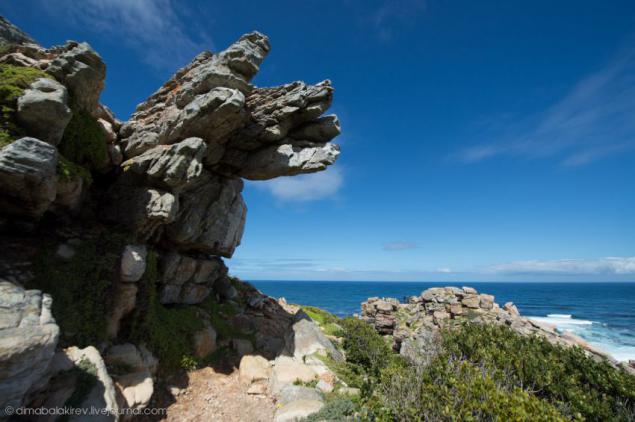
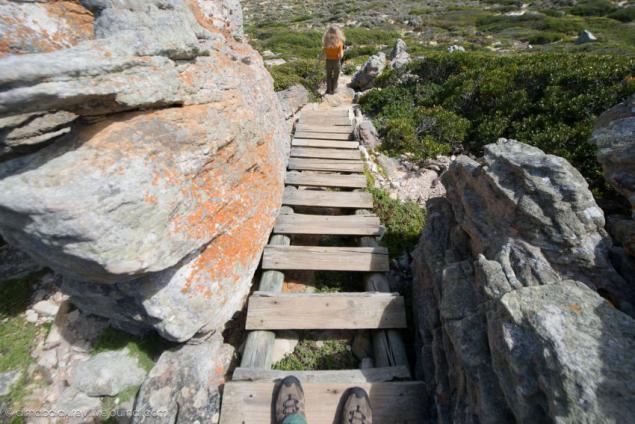
During our expedition tourists significantly increased, but the climb up one of them hesitated.
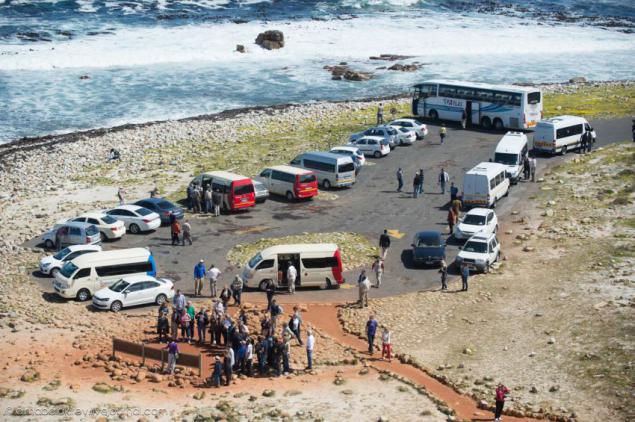
Subdued us Cape of Good Hope from the side looks like:
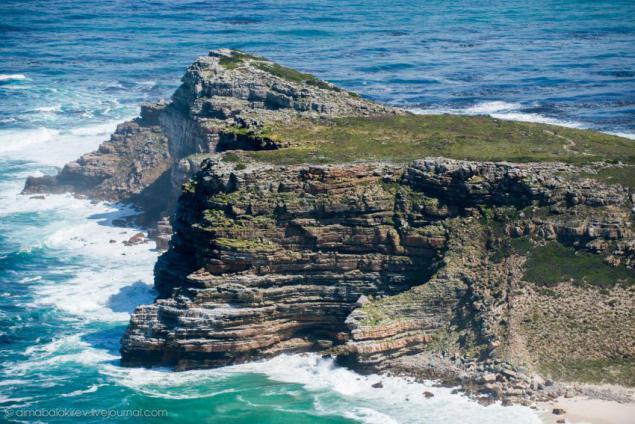
Someone was afraid to approach the foot of the cliff, some do not. Maxim and all sat on a cliff to tie shoelaces.
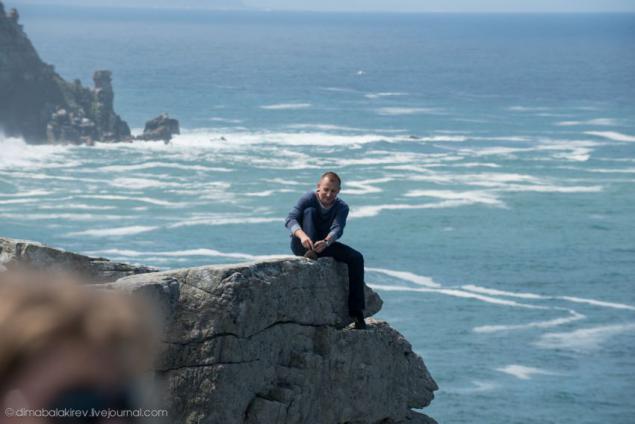
I do not suffer from acrophobia, so happy to pose for history. Over time, you realize that, being on the edge, you are seriously risking. The bad gust of wind could throw you down like a feather. No wonder the explorer Bartolomeu Dias called it the Cape of Storms.
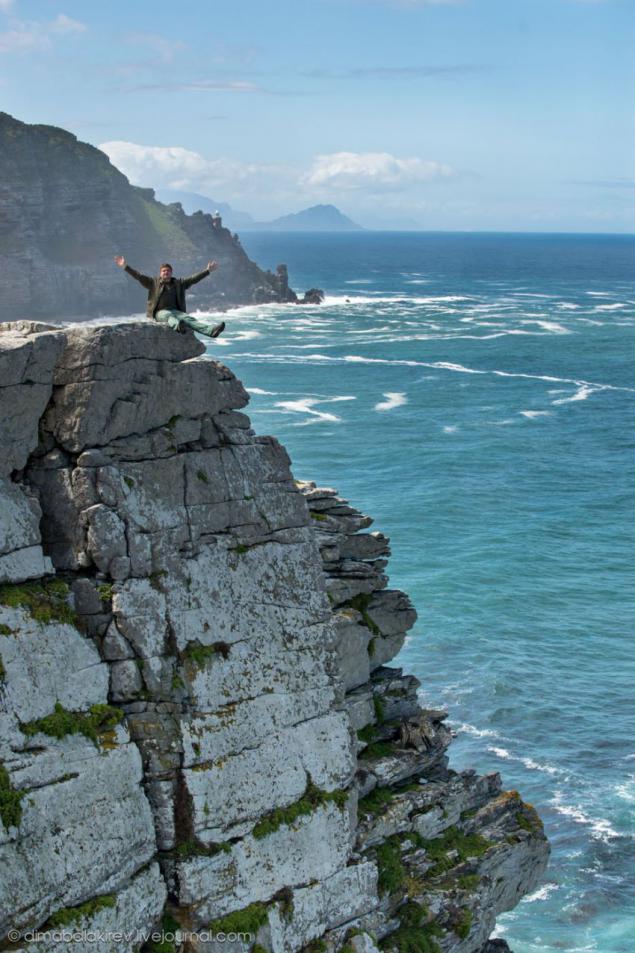
From my position it offers a wonderful view: the meandering trail, surf and mountain views.
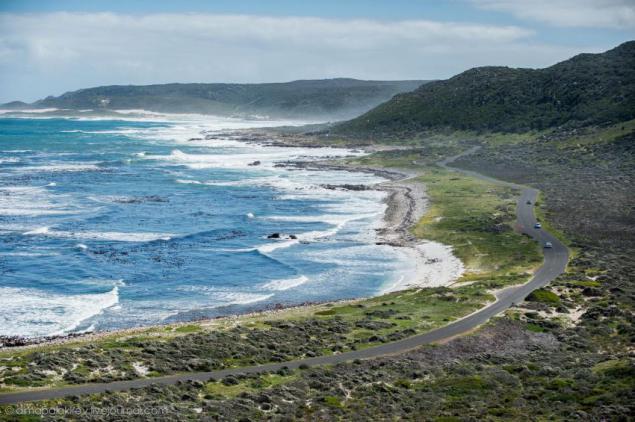
Waves rose by 15 meters, and with a bang beating against the rocks. With stones bird swooped down and snatched the fish from the water. Once you are there, you feel like a hero of the universe of the film "Pirates of the Caribbean».
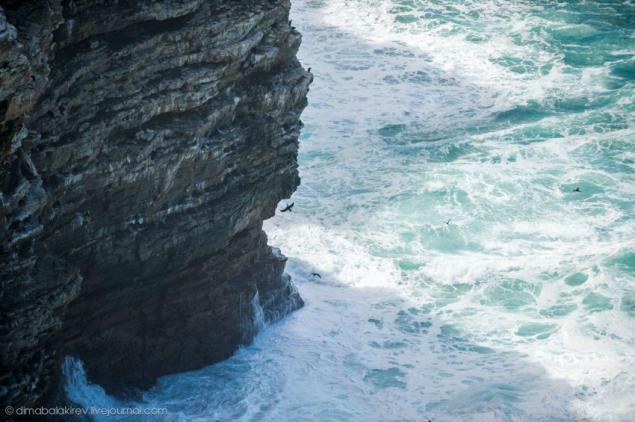
Lizard takes a sunbath. Maybe I'm sensitive, but in Cape Town I really liked the heterogeneity of the stones background that combines a bunch of flowers.
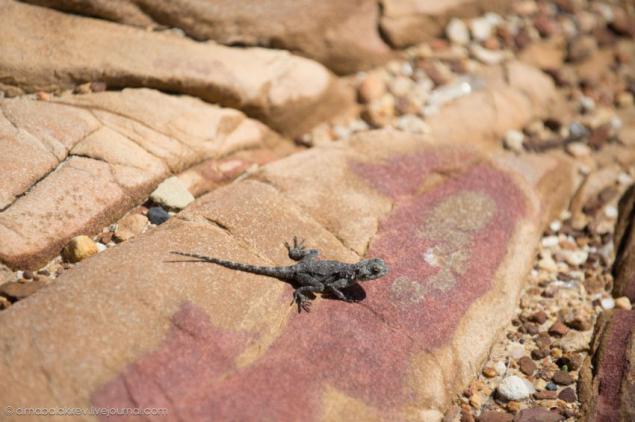
At Cape several levels. Expedition member Peter decided to go down to the tier below:
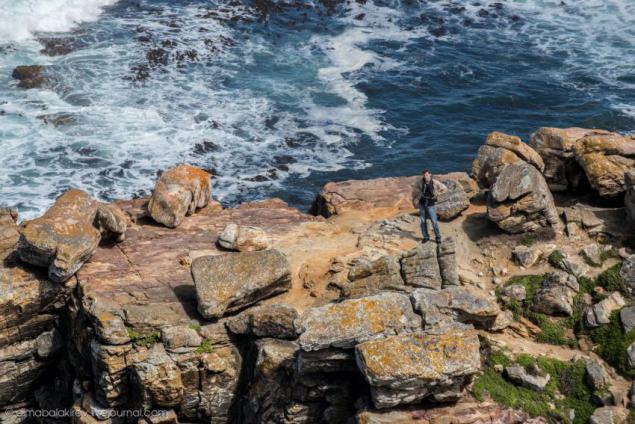
Another tip of the Cape Peninsula - Cape Point, located just north of the Cape of Good Hope. This is not only a tourist mecca, but also a place where spend a traditional race for treylrannigu length of 80 kilometers.

By car, we drove to a mini-fair with numerous souvenir shops, cafes and shops. Up you can climb in two ways: on foot or by cable car. We chose the path of least resistance. :-)
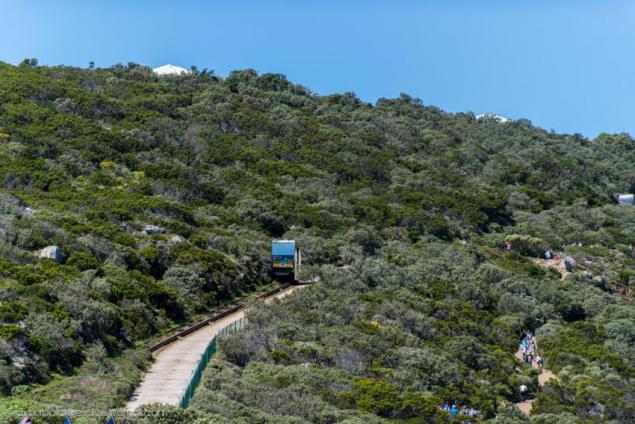
The shop souvenirs for everyone: African tribal masks, totems, statues of giraffes, rhinos and hippos. Rather quality products, merchants willingly concede in price. I decided not to spend time shopping and later regretted - in Cape Town, I could not find similar shops Souvenirs.
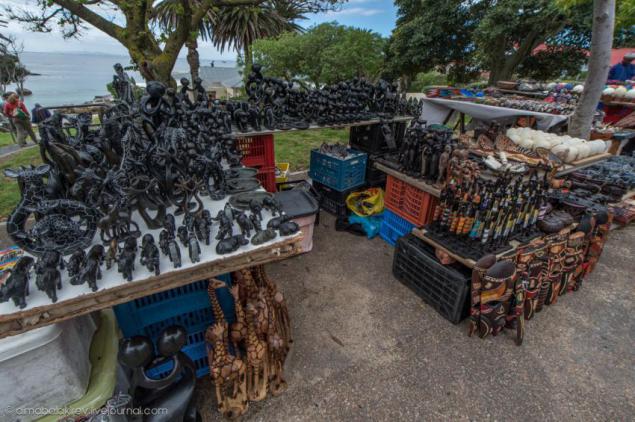
These places are sent to feed the sharks many Portuguese sailors. Rays of light from the lighthouse, which was built on the mountain, they could not break through the high clouds, and ships, left without guidance, breaking on the rocks. The current lighthouse - by the way, one of the world's most powerful - to settle down.
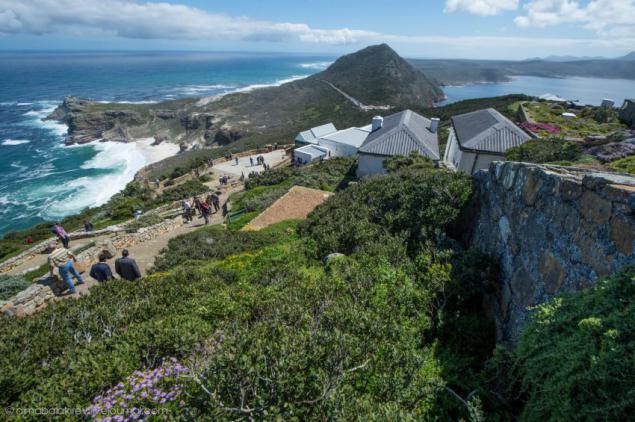

Tourists believe in the myth that Cape Point divides two oceans: the east, dominated throughout the Indian Ocean, it is a resort area, and the area begins west of the Atlantic - the water is a few degrees colder. The official point of view of other researchers: the border between the oceans is the south.
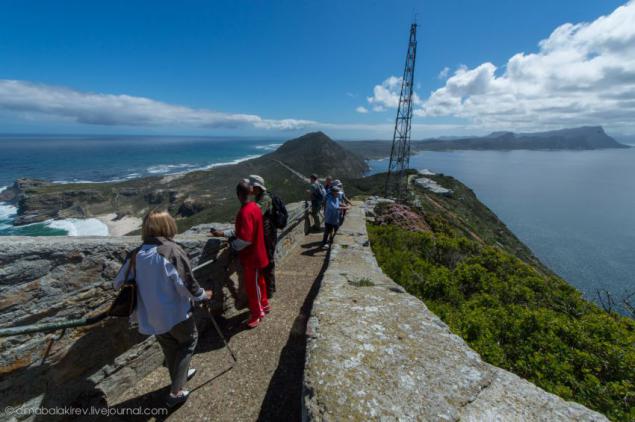
I do not know if planted here by pirates, but in a bay may well be buried treasures :-)

Interestingly, lives there anyone in this house, where there is no electricity, no hot water, no other creature comforts?
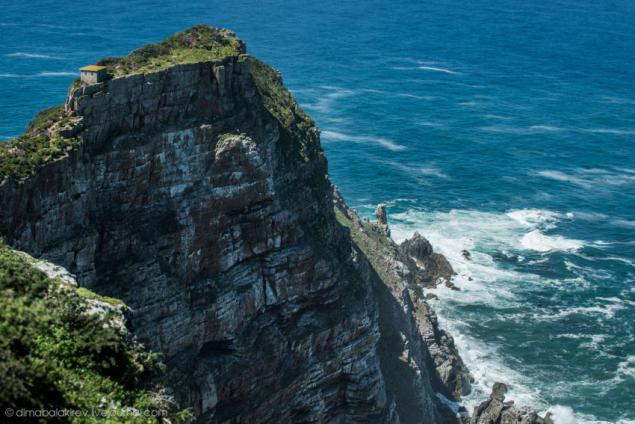
Rock in the cut. Professional geologists certainly can name the exact age of the rocks and determine which part belongs to the breed of Palaios, and what to mezosu. To us, the townsfolk, can only enjoy the beautiful picture.

When you look down, it takes your breath away. The impressions are so strong that you give myself to come back here again and experience the catharsis of what he saw.
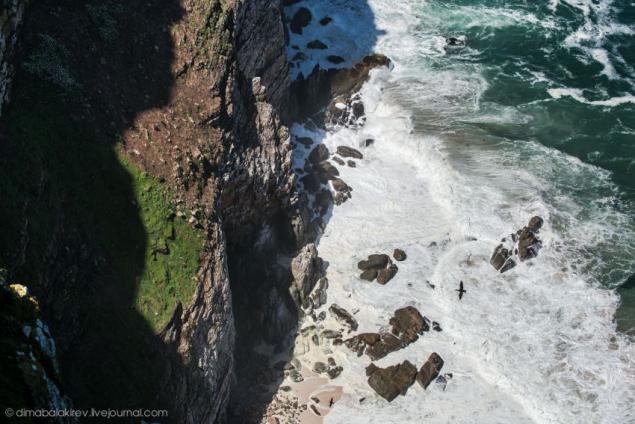
Source: dimabalakirev.livejournal.com

Let's start with a small historical reference: in 1488 here sailed Portuguese expedition led by Bartolomeu Dias. Her goal was to pave the sea route to India, but the mission failed. The extreme south-western point of Africa, the Cape of Storms named Bartolomeo - probably because of the strong winds and steep cliffs, which could become a death trap for the sailors.
Later sailed here Vasco da Gama, who succeeded to build a trade route to India. In memory of the successful expedition Portuguese King John II decided to rename the Cape of Storms in the Cape of Good Hope.

Our tour started in the morning. The sky was overcast, and it seemed that familiarity with the Cape of Good Hope will dull, and we are waiting for a disappointment, gray scenery around and the same gray footage that we took from this place. But the nature turned to face us: twenty minutes later the clouds began to dissipate, and when we climbed to the observation deck, the sky cleared completely.

. Such coastal cliffs I saw for the first time. Rich brown color, surface, wrinkled thousands of lines like old man's face - wrinkled. Unfortunately, the local beauty to behold there was no time: guides mercilessly chased and tourists hurry to respond to the call of all but loving couples. The latter has a special mission: to take a picture together and sign a frame in instagramme "the southernmost point of Africa" (forgive them this little cunning).

After a three-day photo-hunting whales I have a little bored by classical landscape.

. Pointer with a sign «Cape of Good Hope» is set at the beginning of a long exhausting ascent to the top.

During a trip to Africa, I noticed that most of the tourists here - people close to retirement or pension age. Perhaps because of the high cost of the resort, and it is possible - because of generational preferences: while the youth is tracked on the beach and hanging out in clubs, those who are older, contemplate the beautiful scenery. Apparently, in the older group, and I am. :-)

Log steps seem endless. At first the path was quite gentle, but the higher we climbed, the steeper it became. Trudge upstairs with a backpack full of equipment, it was a stupid idea. Given that I needed to shoot just one lens. My advice: if you are thinking to the top, do not be afraid to leave things in the bus - nothing will happen to them.

On the way across viewing platforms, which serve the plateau. Minivan parked at the coast, to look them toy.

Feeling strange. Like the master of ikebana mountain turned into a giant flower exhibition. Turning his head from side to side and all around the bright, saturated and present. And in the air as much marine freshness that it literally puts pressure on you. You stand and you catch yourself thinking, "gosh, how far I was cast from home!»
"Flew bird-bird far away, with the blue sea ocean tridesyatom kingdom of Far Far Away in State» ©.

Dima and Arina the first of our group went upstairs. I was also burdened by the backpack, and at times it seemed that now I was about to head over heels and ostuplyus Pokachi down.
By the way, by the time I had not realized that my wide angle lens is broken, and the pictures are out of focus.

On top of a wooden staircase with steps creaked. Climbing on it, I thought about why these stones do not fall off and how many thousands of years, they still stand for.


Plummet rock something like a two-headed monster with an open mouth. Such could be the ancient worship of the natives.


During our expedition tourists significantly increased, but the climb up one of them hesitated.

Subdued us Cape of Good Hope from the side looks like:

Someone was afraid to approach the foot of the cliff, some do not. Maxim and all sat on a cliff to tie shoelaces.

I do not suffer from acrophobia, so happy to pose for history. Over time, you realize that, being on the edge, you are seriously risking. The bad gust of wind could throw you down like a feather. No wonder the explorer Bartolomeu Dias called it the Cape of Storms.

From my position it offers a wonderful view: the meandering trail, surf and mountain views.

Waves rose by 15 meters, and with a bang beating against the rocks. With stones bird swooped down and snatched the fish from the water. Once you are there, you feel like a hero of the universe of the film "Pirates of the Caribbean».

Lizard takes a sunbath. Maybe I'm sensitive, but in Cape Town I really liked the heterogeneity of the stones background that combines a bunch of flowers.

At Cape several levels. Expedition member Peter decided to go down to the tier below:

Another tip of the Cape Peninsula - Cape Point, located just north of the Cape of Good Hope. This is not only a tourist mecca, but also a place where spend a traditional race for treylrannigu length of 80 kilometers.

By car, we drove to a mini-fair with numerous souvenir shops, cafes and shops. Up you can climb in two ways: on foot or by cable car. We chose the path of least resistance. :-)

The shop souvenirs for everyone: African tribal masks, totems, statues of giraffes, rhinos and hippos. Rather quality products, merchants willingly concede in price. I decided not to spend time shopping and later regretted - in Cape Town, I could not find similar shops Souvenirs.

These places are sent to feed the sharks many Portuguese sailors. Rays of light from the lighthouse, which was built on the mountain, they could not break through the high clouds, and ships, left without guidance, breaking on the rocks. The current lighthouse - by the way, one of the world's most powerful - to settle down.


Tourists believe in the myth that Cape Point divides two oceans: the east, dominated throughout the Indian Ocean, it is a resort area, and the area begins west of the Atlantic - the water is a few degrees colder. The official point of view of other researchers: the border between the oceans is the south.

I do not know if planted here by pirates, but in a bay may well be buried treasures :-)

Interestingly, lives there anyone in this house, where there is no electricity, no hot water, no other creature comforts?

Rock in the cut. Professional geologists certainly can name the exact age of the rocks and determine which part belongs to the breed of Palaios, and what to mezosu. To us, the townsfolk, can only enjoy the beautiful picture.

When you look down, it takes your breath away. The impressions are so strong that you give myself to come back here again and experience the catharsis of what he saw.

Source: dimabalakirev.livejournal.com








